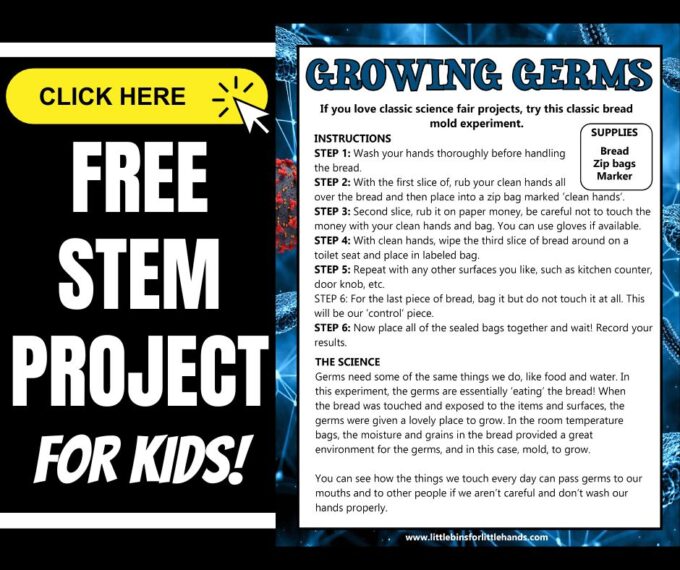Ever wondered why you get told to wash your hands regularly? Here’s a fun and easy way to learn about something you cannot see with the naked eye, germs. Find out which surface grows the most germs using slices of bread. Will it your hands or something else? Set up this easy germ science experiment for a hands-on science project for kids.
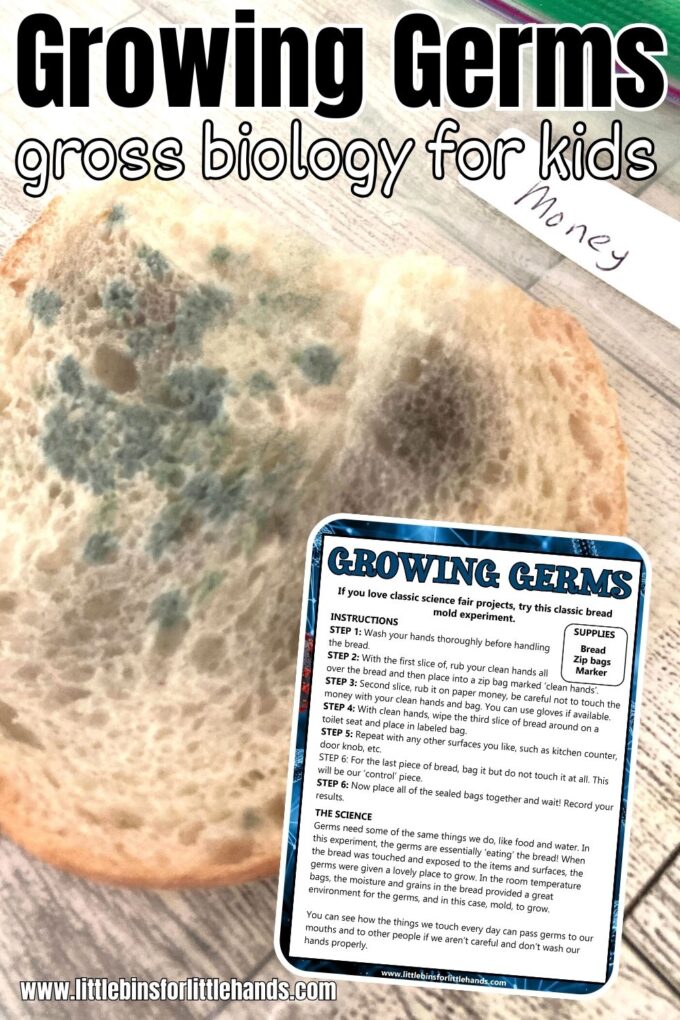
Explore Germs With Bread
This germ science experiment is a fun way to learn about microorganisms you cannot see. All you need are a few supplies you would have in your kitchen cupboards.
Our science experiments are designed with you, the parent or teacher, in mind! Easy to set up, and quick to do, most activities will take only 15 to 30 minutes to set up and do and are heaps of fun! Plus, our supplies lists usually contain only free or cheap materials you can source from home!
Grab some slices of bread and find out what happens when they touch different surfaces! Get your kids to make a prediction; which surface will grow the most germs?
Using The Scientific Method
The scientific method is a process or method of research. A problem is identified, information about the problem is gathered, a hypothesis or question is formulated from the information, and the hypothesis is tested with an experiment to prove or disprove its validity.
Sounds heavy… What in the world does that mean?!? It means you don’t need to try and solve the world’s biggest science questions! The scientific method is all about studying and learning things right around you.
As children develop practices that involve creating, gathering data evaluating, analyzing, and communicating, they can apply these critical thinking skills to any situation.
LEARN MORE HERE: Using The Scientific Method with Kids
Note: The use of the best Science and Engineering Practices is also relevant to the topic of using the scientific method. Read more here and see if it fits your science planning needs.
What Are Germs?
Germs really refer to several different microorganisms, living things that are so small we can’t see them with the naked eye. Usually we use the term to describe those that can cause disease or are harmful to humans, animals, or plants.
These microorganisms include bacteria, viruses, fungi (which includes mold), and protozoa. Harmful microorganisms or germs can spread through people having contact with contaminated surfaces. Germs are responsible for illnesses like the common cold, and the flu.
Many microorganisms are not harmful but are essential for life on earth, including our digestion and nutrient cycling in ecosystems. See the nitrogen cycle. Our amazing bodies are also home to trillions of microorganisms, which are important for maintaining our health.
Cleaning surfaces regularly and washing our hands are important ways to prevent the spread of harmful germs.
Growing Germs On Bread
Germs need some of the same things we do, like food and water. In this germ experiment, the germs are essentially ‘eating’ the bread!
When the bread is touched and exposed to different items and surfaces, the germs are given a lovely place to grow. In the room temperature bags, the moisture and grains in the bread provide a great environment for germs to grow.
You won’t know what specific germs are growing without looking under a microscope. However you will see a collection of germs on the surface of the bread.
This is a great way to illustrate how the things we touch every day can pass germs to our mouths and to other people if we aren’t careful and don’t wash our hands properly.
Turn It Into A Germs Science Fair Project
Science projects are an excellent tool for older kiddos to show what they know about science! Plus, they can be used in all sorts of environments including classrooms, homeschool, and groups.
Kids can take everything they have learned about using the scientific method, stating a hypothesis, choosing variables, making observations and analyzing and presenting data.
Want to turn one of these experiments into an awesome science fair project? Check out these helpful resources.
Get your FREE printable germs project!
Germ Science Experiment
Apply the scientific method, by investigating which surface is the biggest source of germs. The dependent variable is the amount of germ growth on the bread. The independent variable is the surface the bread touches. Learn more about variables in science.
Supplies:
- Bread
- Zip bags
- Marker
- Gloves (optional)
CLASSROOM TIP: Choose surfaces that are appropriate for your group. For example; use a bin instead of a toilet seat or desk surface instead of the kitchen counter.
Method:
Bread Slice 1: Wash your hands thoroughly before handling the bread. Then with the first slice of, rub your clean hands all over the bread and then place into a zip bag marked ‘clean hands’.
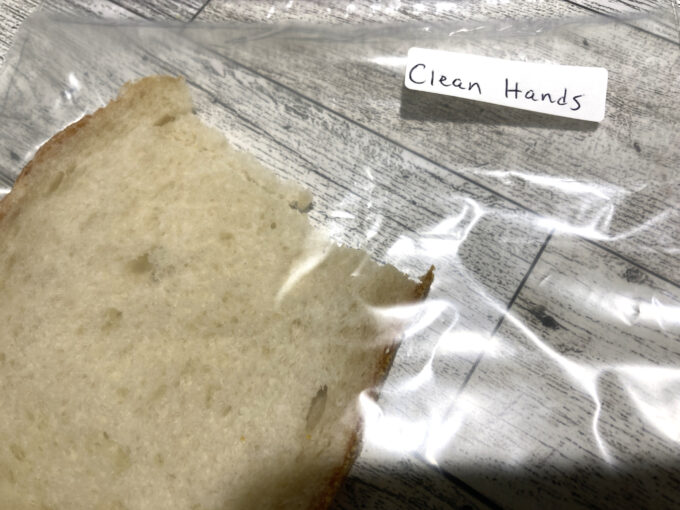
Bread Slice 2: Rub it on paper money, be careful not to touch the money with your clean hands and bag. You can use gloves if available. Place in a labeled bag.
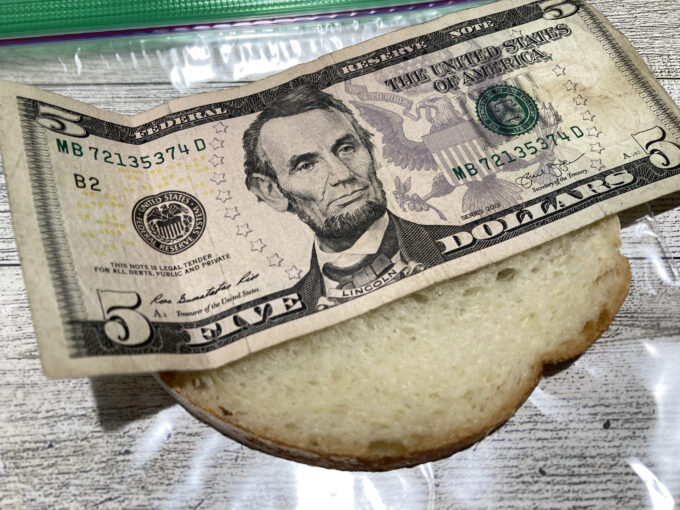
Bread Slice 3: With clean hands, wipe the third slice of bread around on a toilet seat and place in labeled bag.
Bread Slice 4: Repeat with any other surfaces you like, such as kitchen counter, door knob, etc. Place in labeled bag.
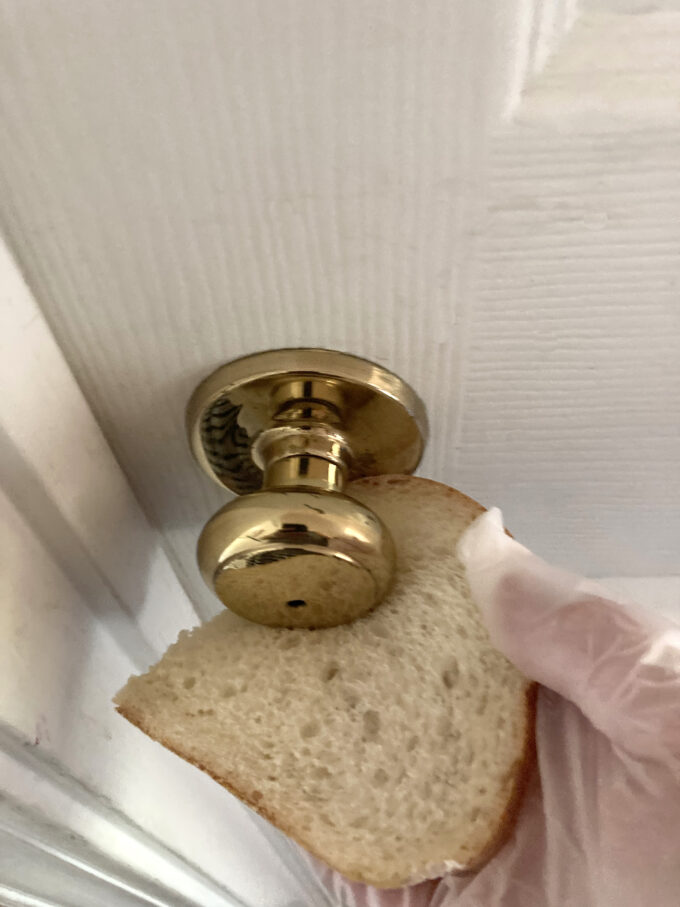
Bread Slice 5: For the last piece of bread, bag it but do not touch it at all. This will be our control.
Now place all of the sealed bags together and observe them over a week! Record your results.
Our Results
You can see our results below at Day 3 and Day 7. Money was definitely the winner for us! Our results also supported the idea of washing your hands regularly to stop the spread of germs.
Day 3:
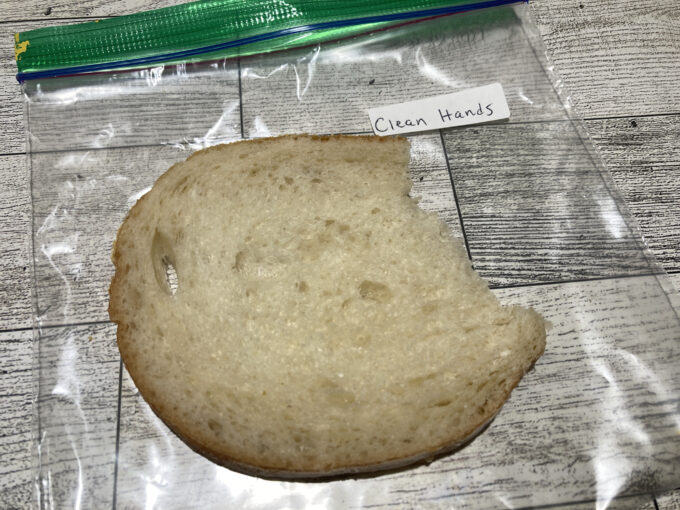
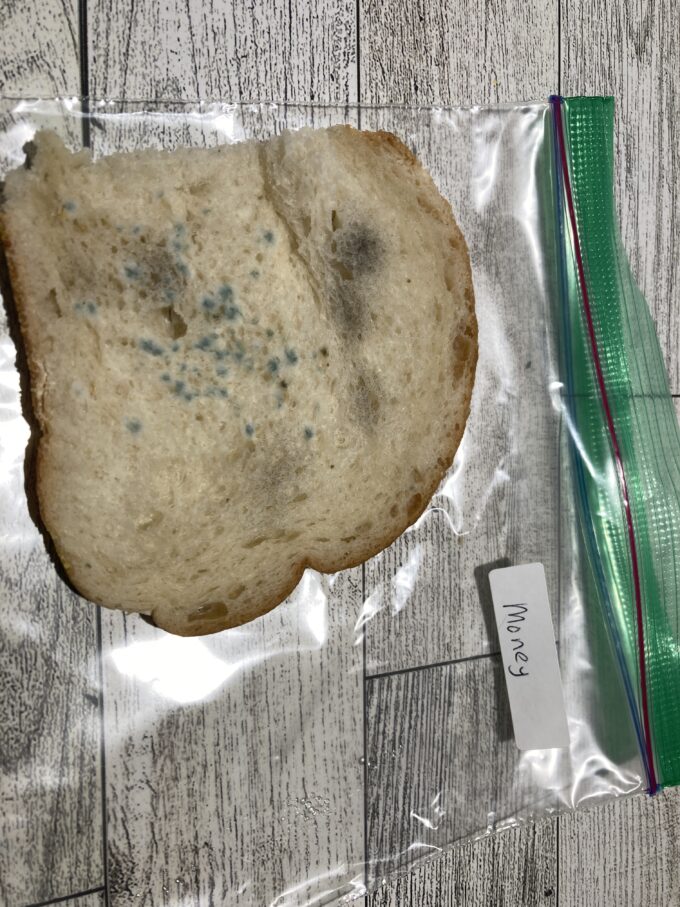
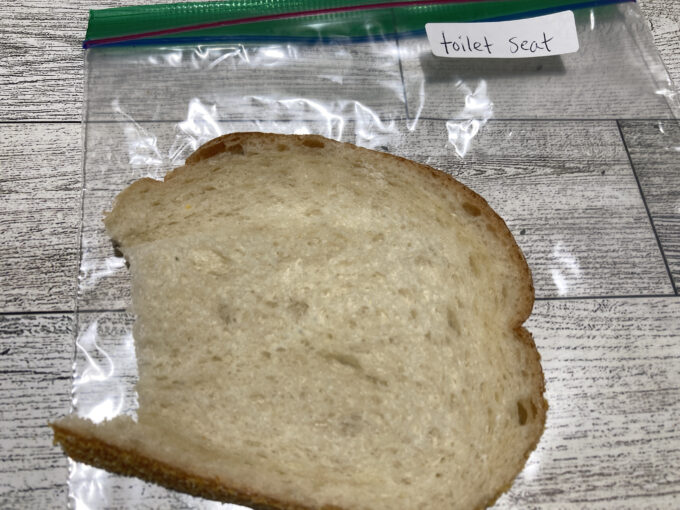
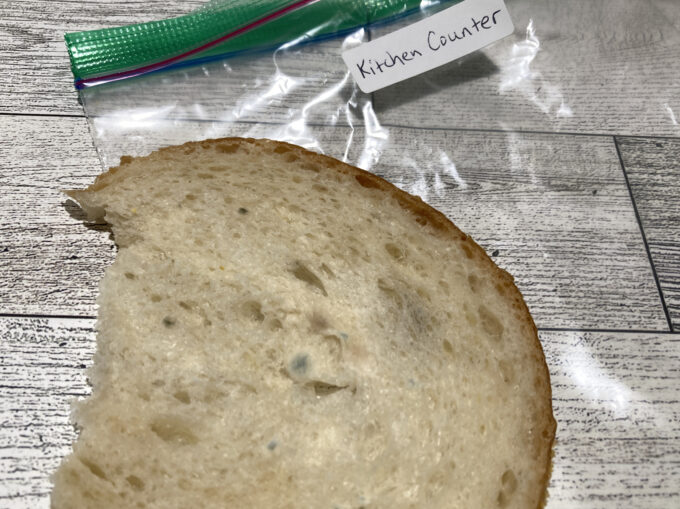
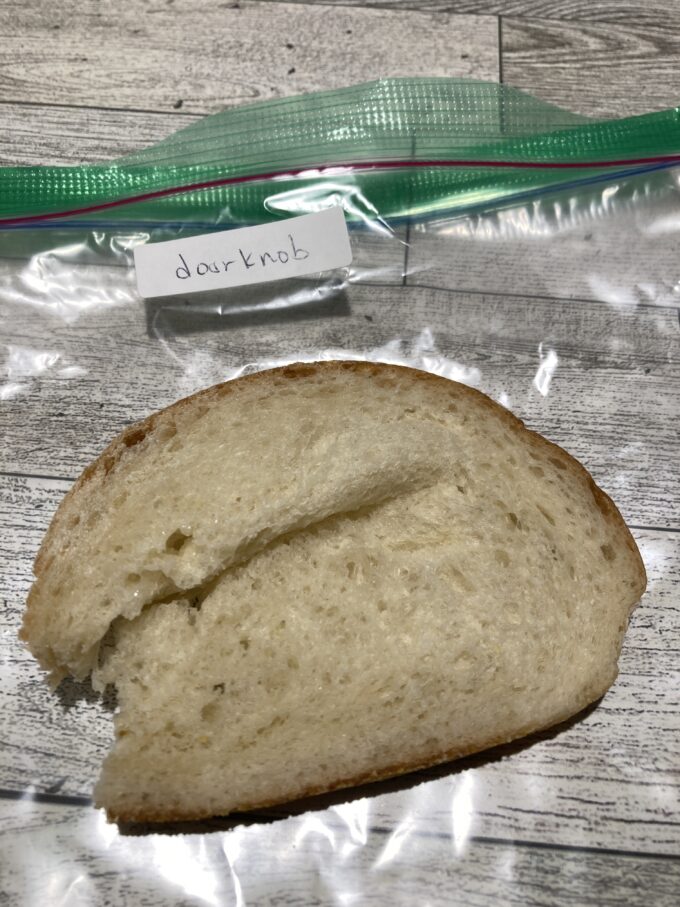
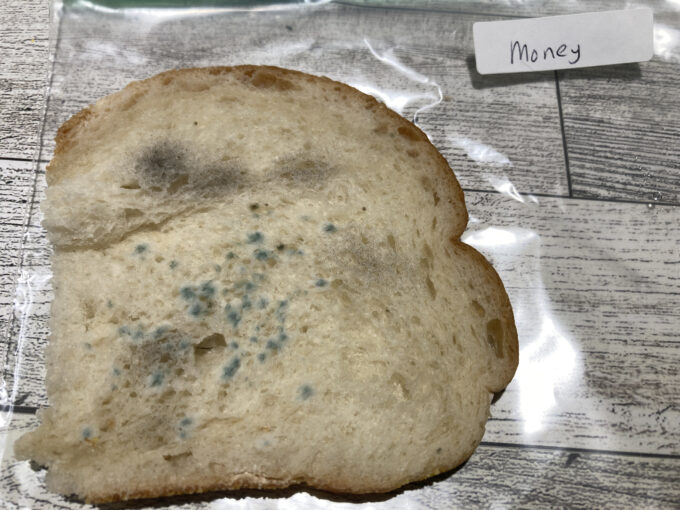
Day 7:
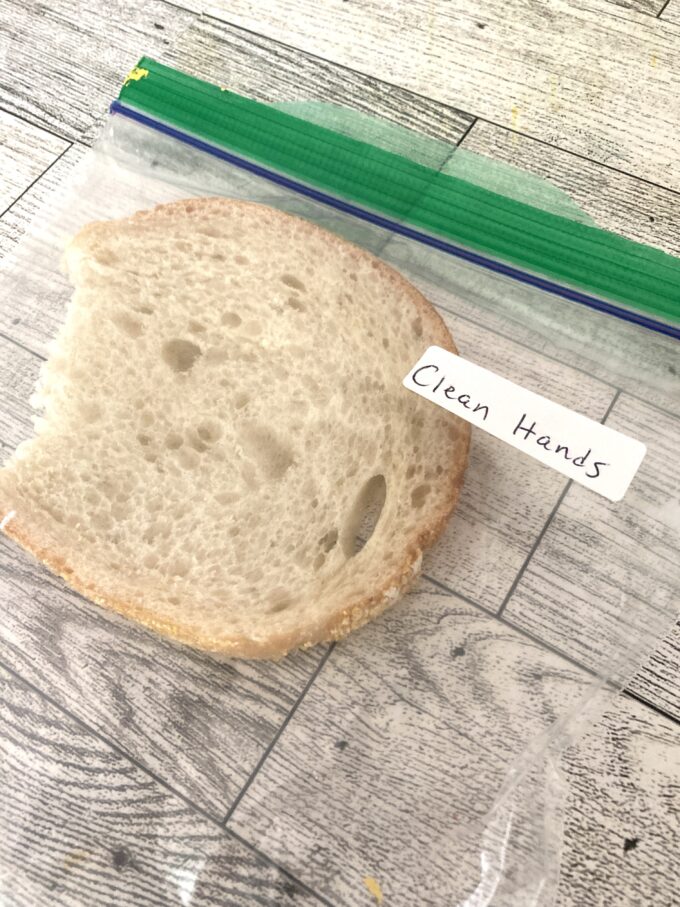
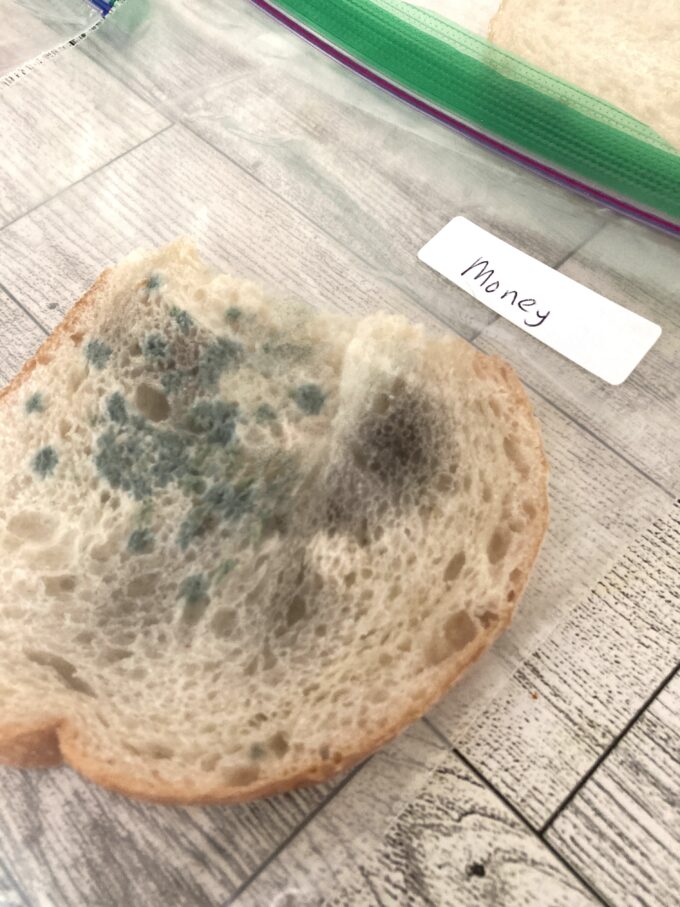

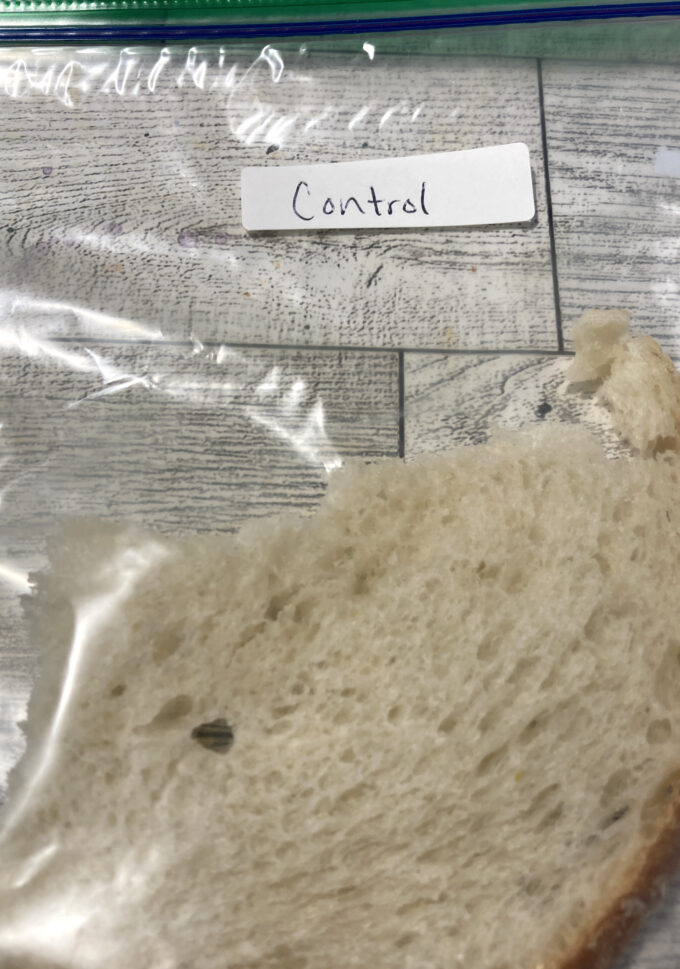
More Fun Science Experiments To Try
- Investigate seed germination with a seed jar.
- Set up a mini-greenhouse.
- Make a model of your heart or of your lungs.
- Learn with animal cell and plant cell coloring sheets.
- Try this easy strawberry DNA lab.
Helpful Science Resources
Here are a few resources that will help you introduce science more effectively to your kiddos or students and feel confident yourself when presenting materials. You’ll find helpful free printables throughout.
- Best Science Practices (as it relates to the scientific method)
- Science Vocabulary
- 8 Science Books for Kids
- All About Scientists
- Science Supplies List
- Science Tools for Kids
- Join us in the Club
Printable Science Projects For Kids
If you’re looking to grab all of our printable science projects in one convenient place plus exclusive worksheets and bonuses like a STEAM Project pack, our Science Project Pack is what you need! Over 300+ Pages!
- 90+ classic science activities with journal pages, supply lists, set up and process, and science information. NEW! Activity-specific observation pages!
- Best science practices posters and our original science method process folders for extra alternatives!
- Be a Collector activities pack introduces kids to the world of making collections through the eyes of a scientist. What will they collect first?
- Know the Words Science vocabulary pack includes flashcards, crosswords, and word searches that illuminate keywords in the experiments!
- My science journal writing prompts explore what it means to be a scientist!!
- Bonus STEAM Project Pack: Art meets science with doable projects!
- Bonus Quick Grab Packs for Biology, Earth Science, Chemistry, and Physics


